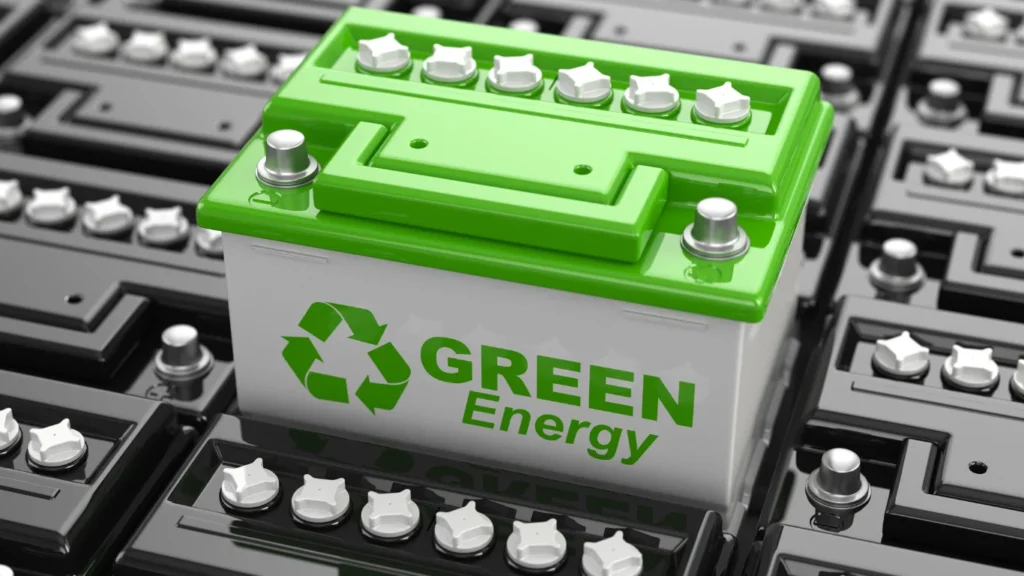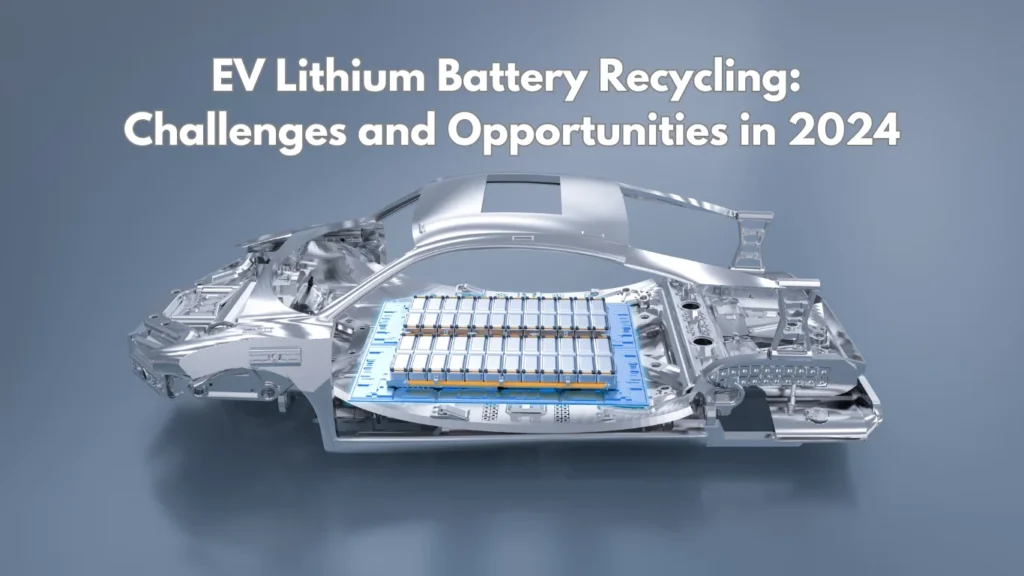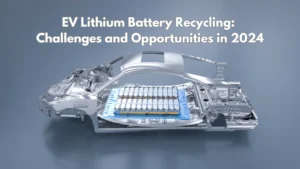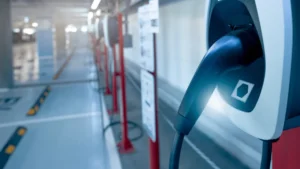As our society continues to evolve towards a greener and more sustainable future, the demand for clean energy solutions is on the rise. This has led to the widespread adoption of electric vehicles (EVs) and, subsequently, the need for efficient and environmentally friendly battery recycling methods. In this article, we will delve into the challenges of EV lithium battery recycling used in electric vehicles as well as their impact on the sustainability of electric transportation.
The Environmental Impact of EV Lithium Batteries
Electric vehicles have become increasingly popular, leading to a rise in the production and use of lithium-ion batteries. While these batteries offer a cleaner and more sustainable alternative to fossil fuel-powered vehicles, they also pose unique challenges in terms of disposal and recycling.
Lithium-ion batteries are composed of valuable materials such as lithium, cobalt, and nickel, which are essential to their functioning. Proper management of these batteries at the end of their life cycle can have a positive impact on the environment. Improper disposal of lithium-ion batteries can release toxic chemicals and heavy metals, polluting soil, water, air and harming humans and the environment.
The Importance of Recycling EV Lithium Batteries

To mitigate the environmental impact of lithium-ion batteries, it is crucial to implement effective recycling methods. Recycling these batteries allows us to recover and reuse valuable materials, reducing the need for new mining and manufacturing. By doing so, we can reduce the strain on natural resources and minimise the carbon footprint associated with the production of new batteries.
Moreover, recycling EV lithium batteries promotes a circular economy by turning used batteries into new energy storage solutions. These recycled batteries can be repurposed for various applications, such as grid energy storage or powering renewable energy systems. By extending the lifespan of these batteries through recycling, we can maximise their value and minimise waste.
The Process of EV Lithium Battery Recycling

The process of EV lithium battery recycling involves several steps to ensure the safe and efficient recovery of valuable materials. Let’s take a closer look at each of these steps:
- Collection – The first step in the recycling process is to collect used EV lithium batteries through various channels, including dedicated collection centres, authorised recycling facilities, and partnerships with automotive manufacturers.
- Sorting and Disassembly – Once collected, the batteries undergo a sorting and disassembly process. This involves separating the different components of the battery, such as the casing, electrodes, and electrolyte. The disassembly process is crucial to facilitate the extraction of valuable materials.
- Material Recovery – After disassembly, the battery components are further processed to recover valuable materials like lithium, cobalt, nickel, and other metals. Various techniques, including mechanical and chemical processes, are employed to extract these materials efficiently.
- Purification – The recovered materials go through a purification process to remove impurities and contaminants. This ensures that the recycled materials meet the required quality standards for reuse.
- Reutilization – Once the materials are purified, they can be used to manufacture new batteries or other energy storage solutions. By incorporating recycled materials into the production process, the reliance on virgin resources can be reduced, leading to a more sustainable and efficient battery industry.
Technologies and Methods Used in EV Lithium Battery Recycling
To achieve efficient and effective EV battery recycling, several technologies and methods are employed. These include:
- Hydrometallurgical Processes – Hydrometallurgical processes involve the use of chemical solutions to extract valuable metals from the battery components. These processes can be employed for the recovery of materials like lithium, cobalt, and nickel.
- Pyrometallurgical Processes – Pyrometallurgical processes involve the use of high-temperature furnaces to smelt and recover metals from the battery components. This method is particularly effective for the recovery of materials like copper and aluminium.
- Mechanical Shredding and Separation – Mechanical shredding and separation processes involve the use of crushers and separators to break down the battery components into smaller pieces. These smaller pieces can then be further processed to extract valuable materials.
- Leaching and Solvent Extraction – Leaching and solvent extraction processes involve the use of chemical solvents to selectively dissolve and separate valuable metals from the battery components. This method is often used for the recovery of materials like cobalt and nickel.
- Direct Reuse – In some cases, EV lithium batteries that are still in good condition can be directly reused, either in other EVs or for other energy storage applications. This can help extend the lifespan of the batteries and reduce the need for immediate recycling.
Challenges and Barriers to EV Lithium Battery Recycling

While the importance of EV lithium battery recycling is undeniable, there are several challenges and barriers that need to be addressed to ensure its widespread adoption. Some of these challenges include:
- Lack of Infrastructure: The proper recycling infrastructure for EV lithium batteries is still relatively underdeveloped in many regions. This lack of infrastructure can hinder the efficient collection, sorting, and processing of used batteries.
- Safety Concerns: EV lithium batteries can pose safety risks if mishandled during the recycling process. The presence of flammable electrolytes and the potential for thermal runaway require specialised equipment and protocols to ensure safe recycling operations.
- Cost and Financial Incentives: Recycling EV lithium batteries can be a costly endeavour, particularly when compared to the relatively low value of the recovered materials. Without adequate financial incentives, recycling facilities may struggle to cover their operational costs.
- Regulatory Frameworks: The absence of standardised and comprehensive regulations regarding EV lithium battery recycling can create uncertainty and hinder the development of a robust recycling industry. Clear guidelines and regulations are necessary to ensure responsible recycling practices.
Regulations and Policies Regarding EV Lithium Battery Recycling
Recognising the importance of recycling an ev battery many countries and regions have implemented regulations and policies to facilitate and regulate the recycling process. These regulations often include:
- Extended Producer Responsibility (EPR): The EPR regulations mandate producers and manufacturers to be responsible for the proper disposal and recycling of batteries, incentivizing them to establish and support recycling programmes.
- Collection and Recycling Targets: Many jurisdictions require manufacturers to meet specific collection and recycling targets for their batteries. These targets incentivize manufacturers to invest in recycling infrastructure and ensure the proper management of end-of-life batteries.
- Battery Labelling and Identification: Regulations often require batteries to be clearly labelled and identified to facilitate their proper sorting and recycling. This helps recycling facilities differentiate between different battery chemicals and handle them accordingly.
- Hazardous Waste Regulations: EV lithium batteries are often classified as hazardous waste due to their flammable and potentially toxic nature. Hazardous waste regulations ensure the safe handling, transportation, and disposal of these batteries.
The Future of EV Lithium Battery Recycling

With the constant increase in demand for electric vehicles, the significance of recycling lithium batteries used in EVs is becoming more evident. The prospects of EV lithium battery recycling are bright, and research and development efforts are ongoing to enhance the recycling technologies and processes.
Advancements in battery design and manufacturing are also playing a crucial role in enhancing the recyclability of EV lithium batteries. Designing batteries with easy disassembly and component separation in mind can simplify the recycling process and increase the recovery of valuable materials.
Furthermore, partnerships between automotive manufacturers, recycling facilities, and government agencies are vital for the successful implementation of robust recycling programmes. Collaborative efforts can help address the challenges associated with infrastructure development, safety concerns, and financial viability.
Benefits of Participating in EV Lithium Battery Recycling Programmes
Participating in EV lithium battery recycling programmes offers numerous benefits for both individuals and businesses. Some of these benefits include.
- Environmental Conservation: By recycling EV lithium batteries, individuals and businesses can prevent toxic chemicals and heavy metals from being released into the environment and contribute to a cleaner planet.
- Resource Conservation: Recycling allows for the recovery and reuse of valuable materials, reducing the need for new mining and manufacturing. This conserves natural resources and helps create a more sustainable supply chain for battery production.
- Circular Economy Promotion: By turning used batteries into new energy storage solutions, recycling promotes a circular economy. This approach minimises waste and maximises the value and lifespan of battery materials, creating a more sustainable and efficient industry.
- Compliance with Regulations: Participating in EV lithium battery recycling programmes ensures compliance with existing regulations and demonstrates a commitment to responsible environmental stewardship. This can enhance the reputation of individuals and businesses and attract environmentally conscious customers.
The Role of Individuals and Businesses in Promoting EV Lithium Battery Recycling

In conclusion, efficient EV lithium battery recycling plays a necessary role in preserving our environment and promoting a sustainable future. By responsibly managing and reutilising these batteries, we can contribute to the long-term viability of electric transportation while reducing our carbon footprint.
Individuals can support EV lithium battery recycling by properly disposing of their used batteries and participating in recycling programmes offered by local authorities or manufacturers. Businesses, especially those involved in the electric vehicle industry, should prioritise the implementation of robust recycling practices and support the development of recycling infrastructure.
Let’s join forces to build a more eco-friendly and sustainable future. It is highly likely that electric cars and their batteries will play a vital role in diminishing our reliance on fossil fuels and fighting against climate change. By embracing recycling practices, we can contribute positively to the health of the planet.




